Tour bajo la Luz de las Estrellas del Palacio Gyeongbokgung (경복궁 별빛야행)
496.90860138952775m 0 2023-09-13
Sajik-ro 161, Jongno-gu, Seúl
1522-2295
Inwoohouse [Korea Quality] / 인우하우스 [한국관광 품질인증]
500.2130591419859m 34542 2023-04-13
9, Gyedong 6-gil, Jongno-gu, Seoul
02-742-1115
Run by a couple hailing from Bukchon, Inwoo House is located in an alleyway in Gye-dong, Jongno-gu, which is part of Bukchon that is well-known for old hanok houses. Inwoo House, meaning 'the house of Inwoo,' is inhabited by the owner couple and eight-year-old son Inwoo and his younger brother Yeonwoo. The couple, who have always lived in Bukchon, moved to Inwoo House in 2010; their parents run another guesthouse -- Yeonwoo House -- in Gahoe-dong, which isn’t far from Inwoo House. These two hanok guesthouses seek to provide guests with an opportunity to experience the true aspect of traditional Korean house amid the natural environment. Inwoo House, which has the typical style of hanok in the area, features a cozy yard, a toenmaru (narrow wooden porch running along the outside of the building), and several charming decorative items. It has three rooms – Tokki-bang and Haejanggeum-bang situated in Sarangchae (a detached building) and Nori-bang, which is a communal space. Due to its quiet location, guests can enjoy relaxation with a serene atmosphere in their rooms, which are decorated with calligraphic works and furniture inlaid with mother-of-pearl in a simple way. Each room is equipped with a bathroom. The guesthouse offers breakfast such as toast or tteokguk (rice cake soup). Inwoo House is an ideal place to stay for guests with children as the owner couple have children with whom children can play in the alley, yard, or toenmaru with an interesting hanok environment. The guesthouse also provides various traditional activities including traditional Korean clothes experience, traditional Hanji (Korean paper) craft experience, traditional knot bracelet making, and fan decorating, which are popular among foreign tourists and children. It is adjacent to restaurants, coffee shops, convenience store, and other tourist attractions including Gyeongbokgung Palace, Changdeokgung Palace, Insa-dong, and Samcheong-dong.
Palacio Gyeongbokgung (경복궁)
503.9413082255621m 104198 2023-09-13
Sajik-ro 161, Jongno-gu, Seúl
Gyeongbokgung fue el palacio principal durante la dinastía Joseon (1392-1910). Es uno de los cinco palacios de Seúl y ostenta 600 años de historia. Fue edificado en 1395 por el monarca que fundó la dinastía Joseon, Lee Seong-Gye, cuando trasladó la sede de la capital de la era Goryeo hasta Seúl. Al estar situado en la parte norte de Seúl, solía ser llamado también como “Palacio del Norte”.
El palacio Gyeongbokgung tiene 501.676 metros cuadrados de superficie, dispuestos en forma de rectángulo. En el lado sur se halla la entrada principal, Gwanghwamun. Al norte, Sinmumun; al este, Yeongchumun; y al oeste, Geonchunmun. Dentro del palacio se encuentran pabellones como Geunjeongjeon, Gyotaejeon, Jagyeongjeon, Gyeonghoeru y Hyangwonjeong.
Geunjeongjeon, la sala principal, era el lugar en donde se realizaban las ceremonias oficiales y los funcionarios rendían los informes matutinos ante el rey. Frente al patio interno, se encuentran trazados tres senderos de granito. El del medio, levemente más elevado, era el trayecto por donde caminaba el monarca y los de los lados eran para su Corte. En el patio se levantan a cada lado los pumgyeseok (estelas de piedra con los cargos de los funcionarios públicos).
Jagyeongjeon y Gyotaejeon eran las residencias de la madre del rey y la reina, respectivamente. Jagyeongjeon es famoso por su muro con flores y por su sipjangsaeng-gulttuk (bajorrelieve de la chimenea). La gulttuk tiene el reconocimiento de ser una de las chimeneas más bellas construidas durante el período Joseon y se encuentra en la lista de los Tesoros Nacionales.
Gyotaejeon eran los aposentos de la reina, y el muro y la entrada posterior, que dan al monte Amisan, son particularmente atractivos a la vista. Además de esto, lo que acentúa aún más la elegancia del palacio Gyeongbokgung son sus estanques de flores de loto, Gyeonghoeru y Hyangwonjeoung.
Gyeonghoeru era el lugar en donde se reunían los dignatarios extranjeros y en donde se celebraban fiestas especiales cuando ocurrían buenos acontecimientos en la nación.
Hyangwonjeong es un espacio dentro del patio posterior, que se halla detrás de los aposentos. Al igual que Gyeonghoeru tiene un estanque de flores de loto; pero a diferencia del mismo, posee características distintivamente femeninas. Su arquitectura aprovecha muy bien la geografía de los alrededores del monte Amisan y toda el área se funde en una gran belleza, un ejemplo perfecto de la estructura tradicional de los palacios coreanos.
Asimismo, dentro de Gyeongbokgung hay una biblioteca, Sujeongjeon, en donde los funcionarios tenían largas horas de lectura y el Sajeongjeon, la oficina de trabajo del rey. Además, hay numerosas reliquias históricas designadas como patrimonios culturales. Muchas de ellas fueron traídas desde todos los lugares de la nación, y se pueden mencionar, como ejemplo, la torre de piedra de 10 pisos del templo Gyeongcheonsa, la torre Jigwangguksa-Hyeonmo del templo Beomcheonsa, el reloj Cheonsang de Borugak y el reloj de agua de Heumgyeonggak, entre otras.
En 1910, cuando se firmó el Tratado de Corea y Japón, los japoneses, tras ocupar la península, tiraron abajo todos los pabellones del área sur y levantaron allí su Gobernación. El edificio japonés fue desmantelado a fines del siglo XX y el palacio sigue en proceso de restauración.
Festival de la Cultura de la Realeza (궁중문화축전)
503.9413082255621m 1237 2024-01-29
Sajik-ro 161, Jongno-gu, Seúl
02-3210-3506 / 1522-2295
Los bellos palacios tradicionales tienen un gran valor como patrimonios tangibles e intangibles de la nación. En combinación con la tecnología más avanzada y toques artísticos, el Festival de la Cultura de la Realeza se celebra en los cuatro principales palacios antiguos de la ciudad: Gyeongbokgung, Changdeokgung, Deoksugung, Changgyeonggung y Gyeonghuigung; y también el Santuario de la Realeza Jongmyo. Disfrute del ambiente primaveral a la vez que conoce sobre la tradición de la realeza y los palacios de Corea.
The Place Seoul (traditional Korean-style guesthouse) [Korea Quality] / 멀티스페이스 곳 [한국관광 품질인증]
511.59152550021236m 600 2019-12-05
52-11, Gyedong-gil, Jongno-gu, Seoul
+82-10-3255-1289
“The Place Seoul” is located in a small alley in Gyedong-gil, Jongno-gu, Seoul. It is a guesthouse made by remodeling an 80-year-old traditional Korean house. The ondol room furnished with traditional beddings is popular not only among foreigners but also among Koreans due to its special ambience. The ceiling of the room dates back to 80 years ago. The rafter put on the roof at the time of construction of the house shows the antiqueness of the house. The toenmaru (a narrow wooden porch running along the outside of a room) that comes alive with the frequent coming and going of people adds to the ambience of the traditional Korean house, with the Sansuyu (corni) tree and vegetable garden beside the Korean-style house creating a leisurely atmosphere.
Beyond being a mere place to sleep in, “The Place Seoul” aims to be a composite cultural space whose motto is “the place to fill.” A simple wedding or a small-scale performance is held in the garden during the day. The rooms can be rented for small meetings.
“The Place Seoul” sponsors “WWOOF KOREA,” an NGO promoting environment-friendly agriculture as well as the right dietary life, “Slow Food Korea,” and “Slow Box.” As such, the place serves a special healthy breakfast consisting of homemade bread, handmade yogurt, and organic fruits and vegetables. In addition, the toilet paper, detergent, shampoo, etc. provided are all environment-friendly products.
“The Place Seoul” is located on Gyedong-gil Road, a famous tourist attraction in Seoul. It offers easy access to Bukchon Hanok Village, which is on the other side of the Gyedong-gil alley, as well as other major tourist attractions within walking distance including Changdeokgung Palace, Gyeongbokgung Palace, Samcheong-dong, and Insa-dong. The convenient location of “The Place Seoul” makes it easy to tour downtown Seoul.
Bukchonmaru hanok guesthouse [Korea Quality] / 북촌마루한옥게스트하우스 [한국관광 품질인증]
547.6496254981743m 17946 2020-09-10
152, Changdeokgung-gil, Jongno-gu, Seoul
+82-10-3253-8751
Bukchonmaru Hanok Guesthouse is located between “Bukchon Views 2 and 3” on a hill in Bukchon Village in Seoul. This two-storied hanbok building with a terrace, which is rarely found among other hanok structures in the area, offers a splendid view of Seoul. In particular, the summit of a hill next to the main gate of Choong Ang High School where the guesthouse is situated is known as the filming location for the famous Korean TV series Winter Sonata (2002). When you open the main gate and go up to the first floor, a small yard is seen with a group of jars on one side. After entering the sliding door through the yard, there is daecheong maru (main floored room) that features the doors opening in all directions and a high ceiling with rafters, making the space open and cozy. The hanok building consists of two floors – the ground floor is equipped with special furniture, a jar table and a log chair made by the owner, and on the first floor are guestrooms comprised of one large room and two small rooms. The neat and clean rooms are designed in a simple way and have lovely bedding with the pattern of five cardinal colors. Its staff members can speak English and Chinese to communicate with guests from other countries. Every morning, guests engage in animated conversation while enjoying a Korean home-style breakfast prepared by the owner in a friendly atmosphere. After having breakfast, if guests want, they can try on traditional Korean clothes (hanbok) and take photographs inside and around the guesthouse to create interesting memories. The guesthouse also provides a hanbok rental service (KRW 30,000 for a day) and tourists wearing traditional Korean clothes can enter both Changdeokgung Palace and Gyeongbokgung Palace, which can be reached on foot within 10 to 15 minutes, free of charge. Moreover, guests can enjoy an open view of the area including Gahoe-dong, Gye-dong and even the lights of the Namsan Seoul Tower at night from the roof top.
Seoureseo Duljjaero Jalhaneunjip (The Second Best in Seoul) (서울서둘째로잘하는집)
574.3615976909622m 20742 2021-04-06
122-1, Samcheong-ro, Jongno-gu, Seoul
+82-2-734-5302
The delicious, sweet, red-bean soup called “Danpatjuk” in Korean and served at “The Second Best in Seoul” has been an all-time favorite since it opened in 1976. Not only the exterior, but the interior as well, is very simple and modest, similar to a teahouse in the '70s. This does not keep people from coming back because the unforgettable taste of the sweet red-bean soup makes them return again and again.
“The Second Best in Seoul” was originally opened as a teahouse for traditional Korean medicinal tea; sweet red-bean soup being one of the main specialties on their menu list. But, nowadays, sweet red-bean soup has become the most popular menu item. Sweet red-bean soup can be enjoyed as a light meal because it fills you up quickly. In addition, the chestnuts, gingko nuts, red beans, and glutinous rice cake that are in the thick red-bean soup provide good nutrition.
TIP: The name is very special, right? “The Second Best in Seoul” was named by their modest mind of making food with utmost sincerity.
Onion (Sucursal de Anguk) (어니언 안국)
583.2691518905303m 0 2024-04-18
Gyedong-gil 5, Jongno-gu, Seúl
Bungmakgol (북막골)
605.0159086914377m 6248 2021-03-24
124-6, Samcheong-ro, Jongno-gu, Seoul
+82-2-730-0980
This is where you can enjoy Bossam (Korean boiled pork with cabbage or lettuce wraps) with roasted garlic. This restaurant's signature menu is napa wraps with pork. This Korean dishes restaurant is located in Jongno-gu, Seoul.
Onmaeul (온마을)
621.5600996300252m 20087 2021-03-22
127, Samcheong-ro, Jongno-gu, Seoul
+82-2-738-4231
A place that sells dishes made with beans, which are good for the health. This restaurant's signature menu is pureed soybean stew. This Korean dishes restaurant is located in Jongno-gu, Seoul.
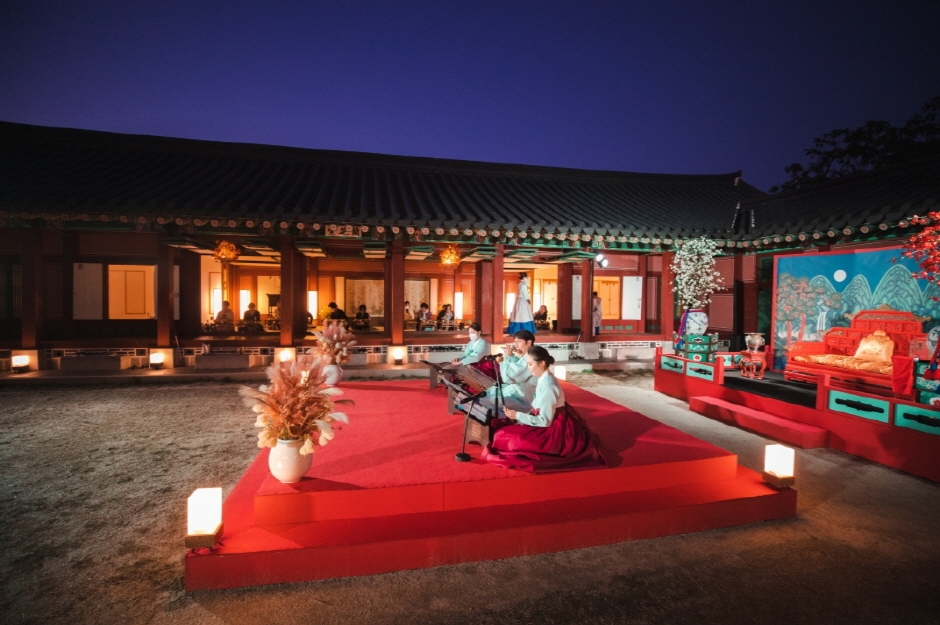
![Inwoohouse [Korea Quality] / 인우하우스 [한국관광 품질인증]](http://tong.visitkorea.or.kr/cms/resource/64/2633664_image2_1.jpg)

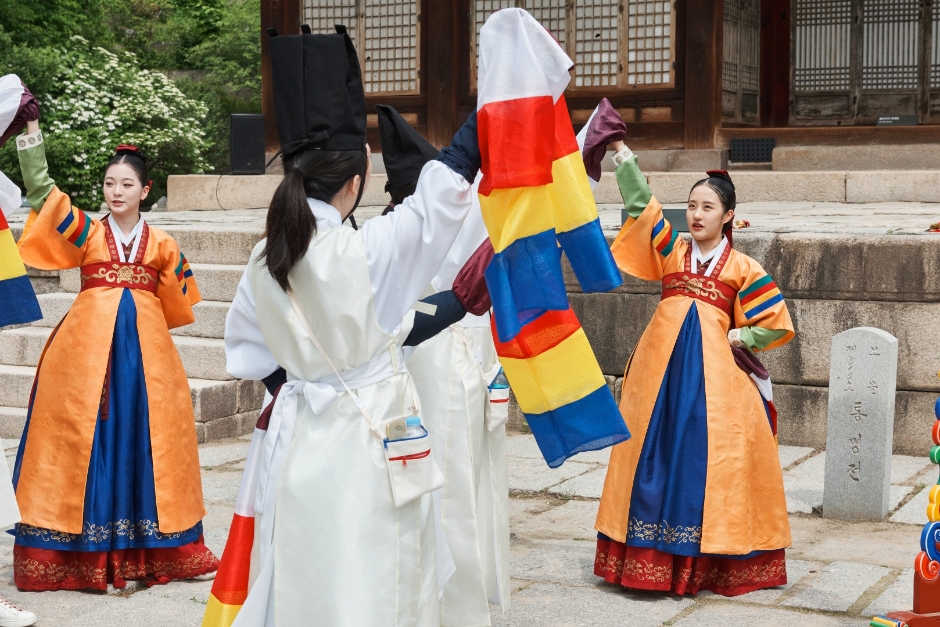
![The Place Seoul (traditional Korean-style guesthouse) [Korea Quality] / 멀티스페이스 곳 [한국관광 품질인증]](http://tong.visitkorea.or.kr/cms/resource/68/2631068_image2_1.jpg)
![Bukchonmaru hanok guesthouse [Korea Quality] / 북촌마루한옥게스트하우스 [한국관광 품질인증]](http://tong.visitkorea.or.kr/cms/resource/32/2574032_image2_1.jpg)
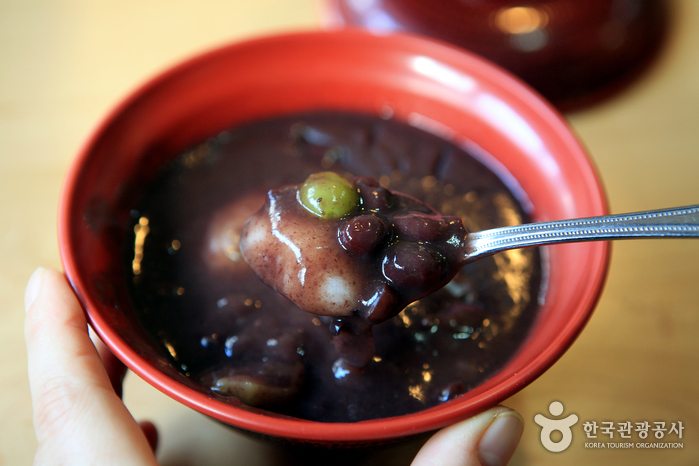
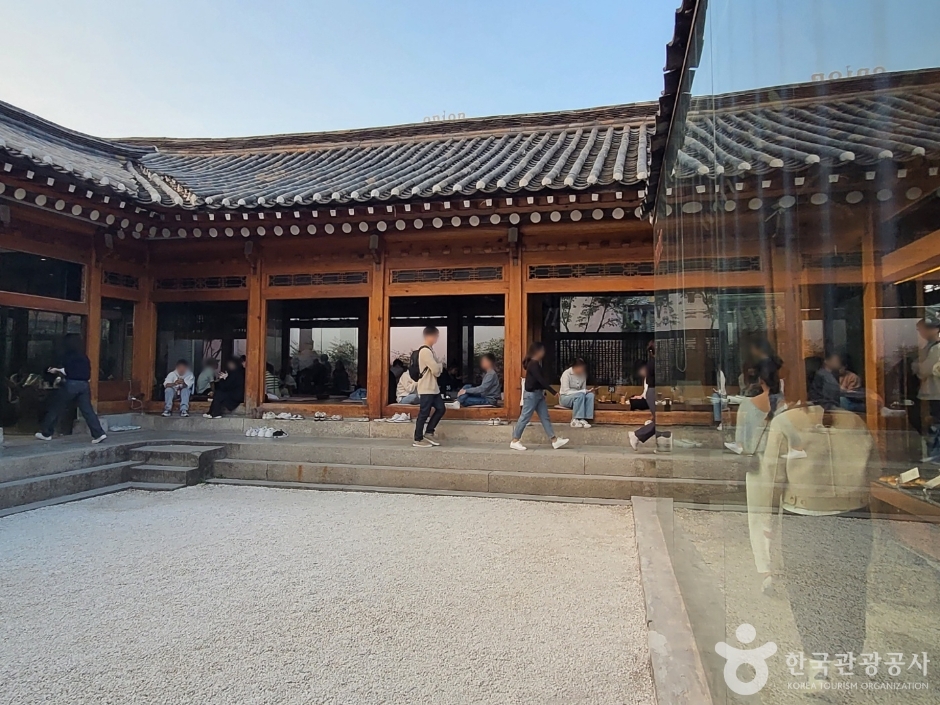
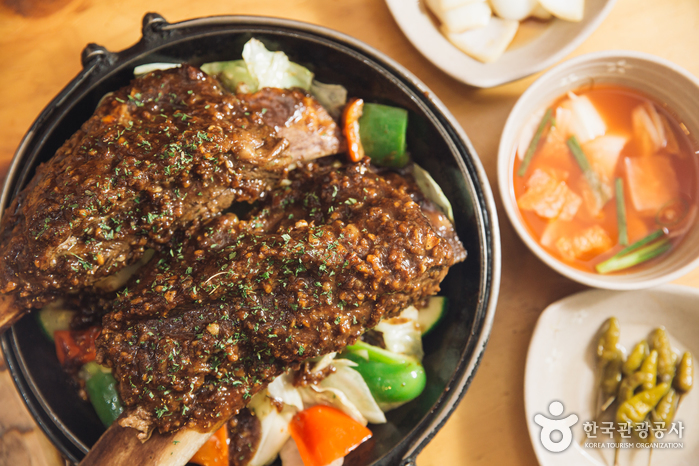
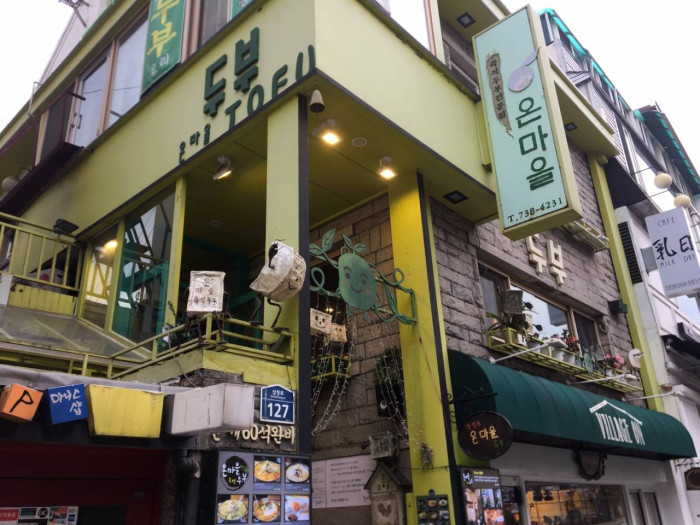
 Español
Español
 한국어
한국어 English
English 日本語
日本語 中文(简体)
中文(简体) Deutsch
Deutsch Français
Français Русский
Русский